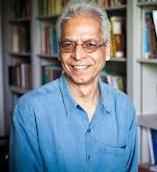The Prejudice of the Modern
Prejudice is cunning. It never appears to the subject or actor as prejudice: it is only ‘others’ who are prejudiced.
And it affects different groups and people in different ways. There are various guises in which modern prejudice masks itself: allowing sectional prejudice (what I call vernacular, visible prejudice) to be disparaged once in a while, but at the same time protecting the ‘common sense’ of our times, the beliefs of those in power (what I call universal, invisible prejudice) from being questioned.
I’ve just written a book that traces the history of modern prejudice, through an investigation of two major formal democracies, the United States and India. In both these countries there is a similar historical process for the social and political distancing of stigmatized, and marginalized populations – such as African Americans and Dalits (or ex-Untouchables). It is of course the case that the older histories of subordination are not shared between African Americans (who only enter into specific modes of modern discrimination and prejudice with plantation slavery) and Dalits (whose much longer history of subordination goes back to Vedic days, although reshaped over the centuries into its modern form). The juxtaposition of these two locations and two histories allows us a rare view of the workings of prejudice in our times.
Vernacular Prejudice. Such prejudice appears on the surface of society, and is readily identified in times of polarized politics and protest. It refers to calculated behavior that we sometimes condemn, when we notice it, or when it is forced on our attention: racism, casteism, patriarchy, heteronormativity, reductive monoculturalism. Prejudice thus as bias, malice, or inherited structures of discrimination, which the state believes it can measure or contain. This is the prejudice that is said to be managed by laws against hate speech and atrocities against minorities, and so on.
Universal Prejudice. Such prejudice is largely invisible because it is widespread (“universal”) and hence seen as “natural.” Because such prejudice is structured into the language of law, state and dominant social groups, its actions are rarely acknowledged as prejudicial. Such prejudice is everywhere and nowhere. We are all its victims; and complaints against its common sense sound bewildering to the state, to the leaders of society, and sometimes to critics (like ourselves).
Consider the simple, naturalized, yet paradoxical, workings of the idea of difference in our times. Men are not described as different; it is women who are. Foreign colonizers are not different; the colonized are. Caste Hindus are not different in India; it is Muslims, and “tribals”, and Dalits who are. White Anglo-Saxon Protestant heterosexual males are not different in the United States; at one time or another, everybody else is. White Australians are not different; Vietnamese boat people, and Fijian migrants to Australia, and, astonishingly, Australian Aboriginals are!
Everywhere, those pronounced as “different” are required to conform to mainstream practices and demands. Prejudice rules, in “visible” and “invisible” forms.
Let me cite just two examples to illustrate the ways in which the prejudices of the mainstream have conditioned the history of the United States and India. In the resurgence of a militant right wing Hindu politics in India in the 1980s and ’90s, sometimes described as Hindu nationalism, one slogan appeared over and over again in attacks against the Muslim minority, in speeches, leaflets and newspapers, and on city walls: “Hindustanmein rehna hai, to humse milkar rehna hoga/ Hindustan mein rehna hai, to bande mataram kehna hoga (Those who wish to live in Hindustan will have to live like us/ Those who wish to live in Hindustan will have to say “Bande Mataram” [Victory to the Mother; i.e., the mother goddess, who is also Mother India]).”
In an echo of the “Jewish question” as it was articulated in the nineteenth and twentieth centuries, when Jews could only live in many parts of Europe if they stopped behaving like “Jews” (whatever that might mean), Muslims could live in India, it was suggested, only if they stopped being Muslims.
The American political scientist Samuel Huntington made a parallel argument regarding immigrants from Mexico who have long lived, worked, and died in the United States, many of them even serving in the military, to which the American establishment readily welcomes them. “There is no Americano dream,” Huntington writes. “There is only the American dream created by an Anglo-Protestant society. Mexican-Americans will share in that dream and in that society only if they dream in English.” Here, the suggestion goes, as in the case of Jews ceasing to be Jews, or Muslims Muslims, is another impossibility.
The two slogans illustrate some of the demands regularly made of minorities – African Americans, Native Americans and Dalits, as well as Muslims in India and Latina/Latino migrants to the USA: to assimilate and conform to the “national”, that is to say, those in positions of power and privilege, masking the very marks of their privilege and their inheritance under the sign of the universal.
In India, Dalits and Muslims are often asked: “Will you tell me whether you consider yourself a Dalit (or a Muslim) first – or an Indian?” It is a question that is never addressed to upper caste, middle- and upper-class Hindu, for they are axiomatically “Indian”. Those who are thought to be axiomatically American have often expressed similar sentiments in relation to the marginalized and the subordinated in the USA – blacks, Hispanics and Native Americans, among them: when will you stop pleading special circumstances as African Americans or Mexicans (or women!) and just behave like “ordinary” Americans?
That is what one might describe as the cunning of modern prejudice, the beauty and artifice of the language of nationalism and modernity. It is the demand for one language, one culture, one order, as the only way of being in the modern world – an order laid down by a white, male, “European” ruling class (even when the ruling class is nominally “brown” and “Indian.”)
Gyan Pandey is the Arts and Sciences Distinguished Professor at Emory University (USA). He was a founding member of the Subaltern Studies Collective, whose main early writings are in The Gyanendra Pandey Omnibus (OUP, 2008) and his new book is A History of Prejudice: Race, Caste and Difference in India and the United States (Cambridge, 2013).
Disclaimer: The views expressed here are the author's personal views, and do not necessarily represent the views of Newsclick
Get the latest reports & analysis with people's perspective on Protests, movements & deep analytical videos, discussions of the current affairs in your Telegram app. Subscribe to NewsClick's Telegram channel & get Real-Time updates on stories, as they get published on our website.

























